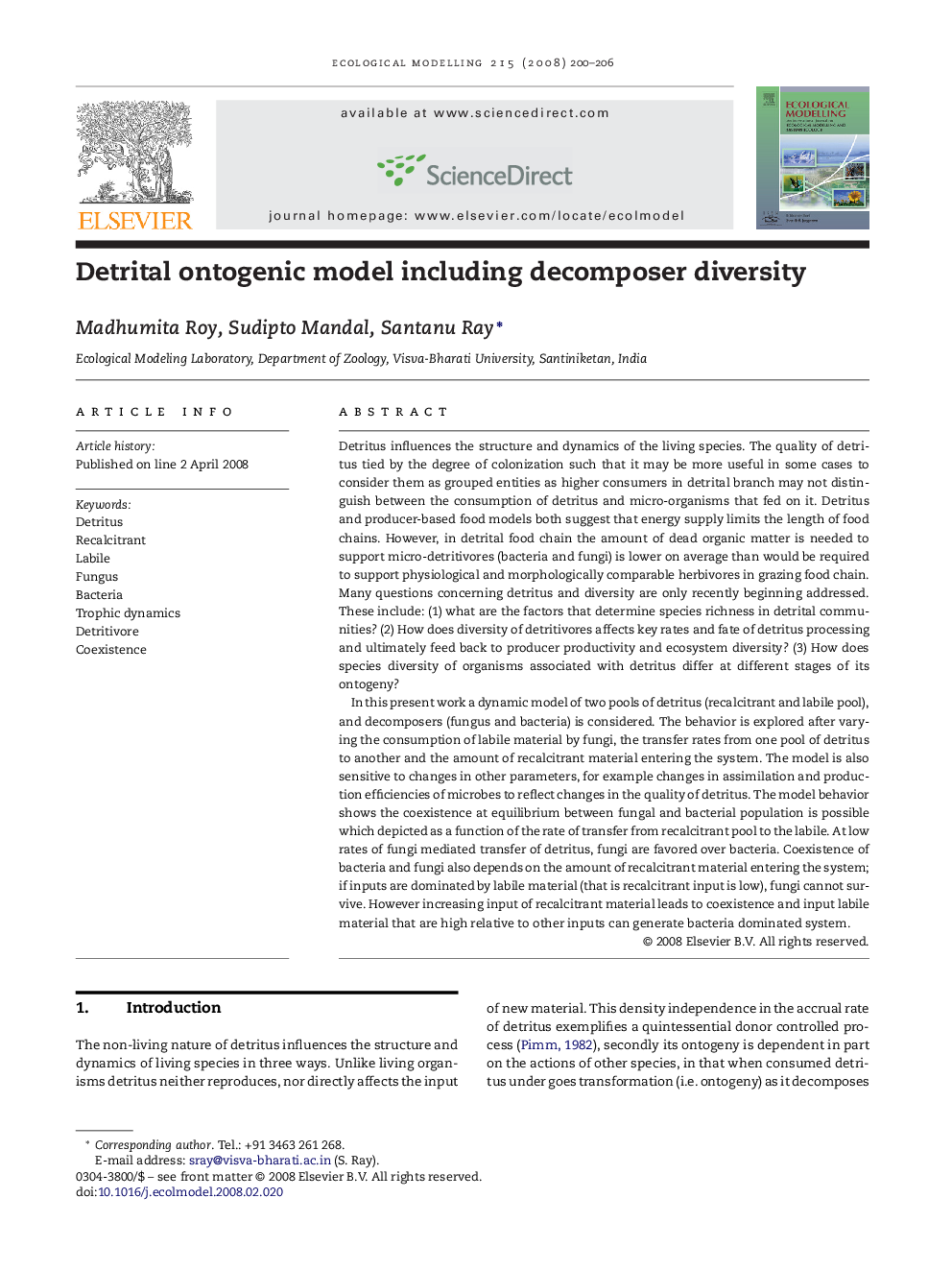| کد مقاله | کد نشریه | سال انتشار | مقاله انگلیسی | نسخه تمام متن |
|---|---|---|---|---|
| 4378039 | 1617532 | 2008 | 7 صفحه PDF | دانلود رایگان |

Detritus influences the structure and dynamics of the living species. The quality of detritus tied by the degree of colonization such that it may be more useful in some cases to consider them as grouped entities as higher consumers in detrital branch may not distinguish between the consumption of detritus and micro-organisms that fed on it. Detritus and producer-based food models both suggest that energy supply limits the length of food chains. However, in detrital food chain the amount of dead organic matter is needed to support micro-detritivores (bacteria and fungi) is lower on average than would be required to support physiological and morphologically comparable herbivores in grazing food chain. Many questions concerning detritus and diversity are only recently beginning addressed. These include: (1) what are the factors that determine species richness in detrital communities? (2) How does diversity of detritivores affects key rates and fate of detritus processing and ultimately feed back to producer productivity and ecosystem diversity? (3) How does species diversity of organisms associated with detritus differ at different stages of its ontogeny?In this present work a dynamic model of two pools of detritus (recalcitrant and labile pool), and decomposers (fungus and bacteria) is considered. The behavior is explored after varying the consumption of labile material by fungi, the transfer rates from one pool of detritus to another and the amount of recalcitrant material entering the system. The model is also sensitive to changes in other parameters, for example changes in assimilation and production efficiencies of microbes to reflect changes in the quality of detritus. The model behavior shows the coexistence at equilibrium between fungal and bacterial population is possible which depicted as a function of the rate of transfer from recalcitrant pool to the labile. At low rates of fungi mediated transfer of detritus, fungi are favored over bacteria. Coexistence of bacteria and fungi also depends on the amount of recalcitrant material entering the system; if inputs are dominated by labile material (that is recalcitrant input is low), fungi cannot survive. However increasing input of recalcitrant material leads to coexistence and input labile material that are high relative to other inputs can generate bacteria dominated system.
Journal: Ecological Modelling - Volume 215, Issues 1–3, 10 July 2008, Pages 200–206